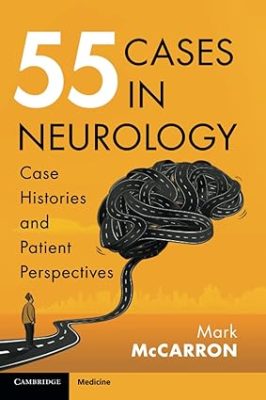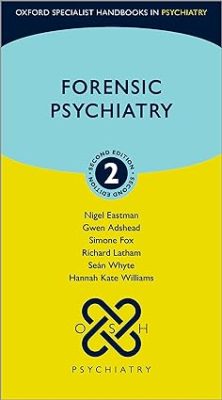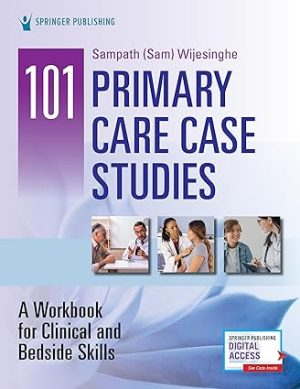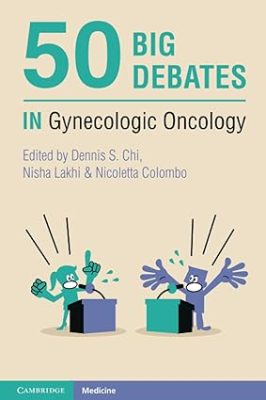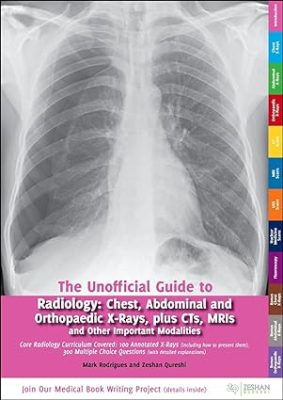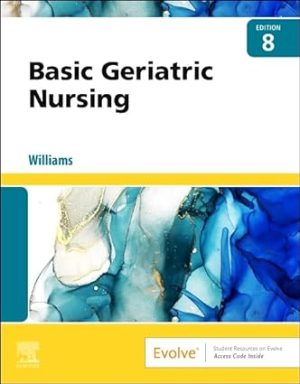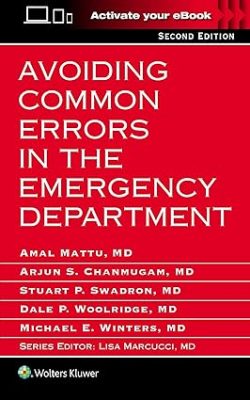Forensic Psychiatry (Oxford Specialist Handbooks in Psychiatry) 2nd Edition
This Second Edition of Forensic Psychiatry covers the clinical, legal, and ethical issues for the treatment of mentally disordered offenders for all of the United Kingdom and Republic of Ireland jurisdictions. Written by an expert interdisciplinary team from the fields of both law and psychiatry, this is a comprehensive and up-to-date guide which includes clinical observations, guidance, and ethical advice across the psychiatric discipline.
The title has been updated with expanded topics on developmental disorders, neuroscience and its use in legal settings, human rights law, dementia, and traumatic brain injury. New legal cases have also been incorporated to reflect changes in legislation, including but not limited to diminished responsibility, deprivation of liberty, and automatism. There are also new parts on forensic psychotherapy, cross-cultural diagnostic validity, and radicalisation.
Alongside practical advice on managing clinical and legal situations, the handbook provides concise examples, summaries of relevant legislation, and introductions to different ethical approaches and clinical observations. Uniquely focusing on the interface between psychiatry and law, this title is essential reading for the forensic psychiatrist, as well as lawyers and judges.
101 Primary Care Case Studies: A Workbook for Clinical and Bedside Skills 1st Edition
Real-life primary care case studies* from more than 50 primary care providers, including physician assistants, nurse practitioners, and physicians!
101 Primary Care Case Studies offers real-life patient scenarios and critical thinking exercises to help you work through a patient’s chief complaint. Through narrative case studies, you will determine how best to diagnose, treat, and manage your patient based on the history of present illness, review of systems, relevant history, and physical examination findings. This workbook will ask probing questions to help you determine differential and most likely diagnoses, diagnostic tests to order, and appropriate patient management strategies using relevant and timely references to support your decisions. The organization of each case study simulates the patient care journey from chief complaint to outcome.
Serving as a virtual clinical preceptor, this workbook can be used independently or in a classroom setting. It is accompanied by a robust online student supplement that provides answers to all questions, real outcomes of the cases, and valuable personal insights from the authors on how the patient was successfully managed. Not only will this workbook help you work through patient cases clinically, it will also share important, but often overlooked, bedside manner skills needed to successfully communicate with and care for your patients.
Covering conditions across all organ systems and across the lifespan, this workbook is organized by chief complaint, providing an authentic perspective on what to expect in the patient care environment. It even includes information on pathophysiology and how to use ICD-10 and CPT (E/M) codes in your documentation. The book uniquely weaves together both the science and art of medicine by including personal insights into quality and compassionate care.
Key Features
Provides real-life patient cases from an interprofessional author team of physician assistants, nurse practitioners, and physicians
Uses a templated case study design and critical thinking exercises to help you methodically work through various patient scenarios
Teaches clinical and bedside manner skills imperative for delivering quality patient care
Covers patients across the lifespan, including pediatric, adolescent, adult, and geriatric populations
Offers additional insight on patient education, medical and legal concerns, and interprofessional collaboration
Includes a robust online student supplement with answers to all the case studies along with valuable insights from the authors on how they successfully managed the cases–see inside for access details
Provides instructors with a table of contents that is filterable by chief complaint, diagnosis, patient population, and organ system
*Details changed to protect patient information.
50 Big Debates in Gynecologic Oncology 1st Edition
Unofficial Guide to Radiology: Chest, Abdominal and Orthopaedic X Rays, Plus CTs, MRIs and Other Important Modalities: Core Radiology Curriculum (Unofficial Guides) 1st Edition
Basic Geriatric Nursing 8th Edition
Provide compassionate, professional nursing care for older adults! Designed for LPN/LVNs, Basic Geriatric Nursing, 8th Edition offers a practical introduction to concepts of aging and the physiologic and psychosocial changes that affect the elderly adult. Clear guidelines help you master basic skills such as health assessment, nursing diagnosis, therapeutic communication, medication administration, and nursing interventions in a variety of health care settings. New Next-Generation NCLEX® examination-style case studies help you develop clinical judgment, and nursing care plans show how to apply theory to practice. Written by experienced nursing educator Patricia Williams, this book provides the knowledge and skills you need to care for an aging population.
- Learning features in each chapter include objectives, key terms with phonetic pronunciations, basic concepts, and clinical application, all connected by case examples and a relevant research study or analysis of multiple studies.
- Nursing Process sections provide a framework for nursing care of older adults as related to specific disorders.
- Get Ready for the NCLEX® Examination! sections include key points, additional learning resources, and NCLEX review questions with answers and rationales on the Evolve website.
- Nursing Care Plans provide real-world examples of care plans along with critical thinking questions.
- Nursing interventions are grouped by health care setting, e.g., acute care, extended care, home care.
- Clinical Situation boxes highlight real-life care scenarios.
- Coordinated Care boxes address leadership and management issues for the LPN/LVN, and include topics such as restraints and end-of-life care.
- Critical Thinking boxes help you develop and improve skills in clinical judgment.
- Special boxes are included for health promotion, safety, nurse alerts, patient education, cultural considerations, home health considerations, complementary health approaches, and more.
- Medication tables summarize information about drugs commonly used in geriatric nursing.
- NEW! Next-Generation NCLEX® examination-style case studies at the end of chaptersinclude new-format questions to help you prepare for the licensure examination.
- NEW! Discussion of the NCSBN Clinical Judgment Measurement Model helps you learn decision making and develop the skills needed to plan effective nursing care.
- NEW! Free Study Guide on the Evolve website includes Next-Generation case studies and review questions to reinforce your understanding.
Avoiding Common Errors in the Emergency Department 2nd Edition
In a conversational, easy-to-read style, Avoiding Common Errors in the Emergency Department, 2nd Edition , discusses 365 errors commonly made in the practice of emergency medicine and gives practical, easy-to-remember tips for avoiding these pitfalls. Chapters are brief, approachable, and evidence-based, suitable for reading immediately before the start of a rotation, used for quick reference on call, or read daily over the course of one year for personal assessment and review.
?Key Features:
- Coverage includes psychiatry, pediatrics, poisonings, cardiology, obstetrics and gynecology, trauma, general surgery, orthopedics, infectious diseases, gastroenterology, renal, anesthesia and airway management, urology, ENT, and oral and maxillofacial surgery.
- Completely revised and rewritten by many new authors, as well as returning authors who bring a fresh perspective to new subjects.
- New key points at the end of each chapter present must-know information in an easy-access, bulleted format.
- Ideal for emergency medicine physicians, residents, and attendings; emergency nurse practitioners, PAs who practice in the ED, and primary care physicians in urgent care centers.
Your book purchase includes a complimentary download of the enhanced eBook for iOS, Android, PC & Mac.
Take advantage of these practical features that will improve your eBook experience:
- The ability to download the eBook on multiple devices at one time — providing a seamless reading experience online or offline
- Powerful search tools and smart navigation cross-links allow you to search within this book, or across your entire library of VitalSource eBooks
- Multiple viewing options offer the ability to scale images and text to any size without losing page clarity as well as responsive design
- The ability to highlight text and add notes with one click
Autologous Blood Concentrates, 2nd Edition
Autologous Blood Concentrates, 2nd Edition
Pediatric Imaging Cases (Cases in Radiology)
Pediatric Imaging Cases (Cases in Radiology)
Chromaffin Cells: Methods and Protocols (Methods in Molecular Biology Book 2565)
Chromaffin Cells: Methods and Protocols (Methods in Molecular Biology Book 2565)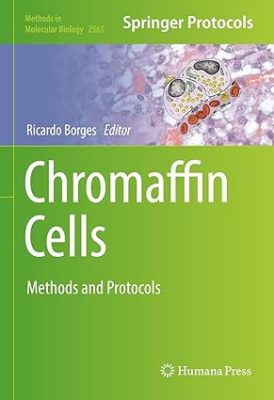
This volume covers the most up-to-date methods and techniques used to further the understanding of chromaffin cell biology and pharmacology. Chapters guide readers through the basic mechanisms that regulate the stimulus-secretion coupling, chromaffin, tumor-derived cell PC-12 , morphology, biochemistry, pharmacology, electrophysiology, and electrochemistry. Written in the successful Methods in Molecular Biology series format, chapters include introductions to their respective topics, lists of the necessary materials and reagents, step-by-step, readily reproducible protocols, and notes on troubleshooting and avoiding known pitfalls.
Authoritative and cutting-edge, Chromaffin Cells: Methods and Protocols aims to be a useful practical guide to researches to help further their study in this field.









